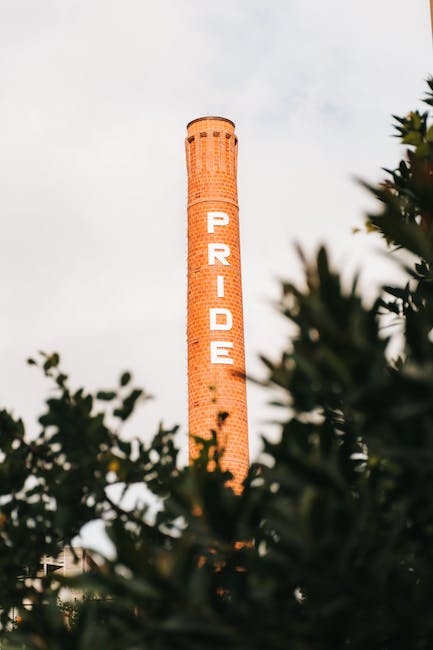The Origin and Rise of Boba: From Taiwan to the United States
Have you ever sipped on a refreshing milk tea, only to be met with a delightful surprise at the bottom of your drink? That’s right, we’re talking about the beloved tapioca pearls, also known as boba. This chewy addition to drinks has taken the world by storm, but do you know where it all started?
Origins of Boba
It all began in Taiwan in the 1980s. Boba was initially added to milk tea as a fun and chewy addition, and it quickly gained popularity throughout Asia. Its unique texture and flavor made it a hit among young people, and soon, boba shops started popping up all over the place.
Arrival in the United States
In the late 1990s, boba made its way to the United States, starting in California. It quickly spread to other states, and the demand for boba grew as it became a popular drink among young people. Today, boba can be found in a variety of drinks, including milk tea, fruit tea, and smoothies.
Domestic Production of Tapioca Pearls
While many boba shops source their tapioca pearls from Taiwan, there are now several companies in the United States that produce tapioca pearls domestically. These companies use high-quality ingredients and innovative techniques to produce tapioca pearls that meet the standards of discerning boba enthusiasts.
The availability of domestically-produced tapioca pearls allows boba shops to support local businesses and reduce their environmental impact by reducing shipping distances.
Conclusion
The rise of boba in the United States has been nothing short of impressive. From its humble beginnings in Taiwan to its current status as a beloved drink addition, boba has captured the hearts (and taste buds) of many. With the availability of domestically-produced tapioca pearls, boba shops can continue to provide their customers with high-quality drinks while supporting local businesses and reducing their environmental impact.
The Challenges Faced by Tapioca Pearl Manufacturers in the USA
Have you ever enjoyed a refreshing bubble tea with chewy tapioca pearls? These delightful little balls are made from cassava root starch and are a staple ingredient in many Asian desserts and drinks. However, tapioca pearl manufacturers in the USA face several challenges in maintaining the quality, sustainability, and availability of this beloved ingredient.
Quality
One of the main challenges faced by tapioca pearl manufacturers in the USA is maintaining the quality of the pearls. Tapioca pearls are traditionally made from cassava root starch, which is sourced from tropical regions like Thailand and Vietnam. The quality of the starch can vary depending on factors like climate, soil, and processing methods. Therefore, it can be difficult to replicate the exact texture, flavor, and color of authentic tapioca pearls in the USA.
Some manufacturers use modified starches or additives to mimic the texture and flavor, but this can compromise the authenticity and healthfulness of the product. Consumers are becoming increasingly aware of the ingredients in their food and are seeking out natural, whole foods. Therefore, tapioca pearl manufacturers need to find ways to maintain the quality of their products while still meeting consumer demand.
Sustainability
Another challenge is ensuring the sustainability of the tapioca pearl supply chain. Cassava root is a staple crop in many developing countries, and its cultivation can have significant social and environmental impacts. For example, cassava farming can lead to deforestation, soil erosion, and water pollution if not managed properly.
Moreover, the transportation of cassava starch to the USA can contribute to carbon emissions and other logistical challenges. Therefore, tapioca pearl manufacturers need to prioritize sustainable sourcing practices, such as working with local farmers, using organic and fair trade ingredients, and minimizing waste and packaging.

Availability
Finally, a major challenge is the limited availability of tapioca pearl manufacturing equipment and expertise in the USA. Tapioca pearls are typically made using specialized machinery that requires skilled operators and maintenance. However, there are few companies in the USA that offer such machinery or training, which can make it difficult for new entrants to the market.
Additionally, the demand for tapioca pearls in the USA is relatively low compared to other countries like Taiwan or China, which can make it harder for manufacturers to scale up their operations and achieve economies of scale. As a result, many tapioca pearl products in the USA are imported from other countries, which can further complicate the sustainability and quality issues mentioned above.
Conclusion
Tapioca pearl manufacturers in the USA face several challenges in maintaining the quality, sustainability, and availability of this beloved ingredient. However, with a commitment to sustainable sourcing practices, investment in specialized machinery and expertise, and a focus on authentic, whole foods, these challenges can be overcome. As consumers continue to seek out new and exciting flavors and textures, tapioca pearls are sure to remain a popular ingredient in many delicious treats.
The Rise of Tapioca Pearls Made in the USA
Have you ever tried bubble tea? This Taiwanese drink has taken the US by storm in recent years, with its sweet and refreshing flavors and signature tapioca pearls. But did you know that most of the tapioca pearls used in bubble tea are imported from Asia? That’s right, until recently, there were no US-based companies producing tapioca pearls. But that is changing, and today we’ll explore the growing trend of tapioca pearls made in the USA.
The Economic and Sustainability Reasons Behind the Trend
As the demand for bubble tea has grown, so has the demand for tapioca pearls. And while some US-based bubble tea shops have been importing their tapioca pearls from Taiwan or other Asian countries, others have recognized the potential of producing tapioca pearls locally.
One reason is economic: by sourcing their ingredients locally, US-based companies can reduce shipping costs and support local businesses. Additionally, producing tapioca pearls locally can provide jobs and boost the economy.
Another reason is sustainability: importing ingredients from overseas can have a high environmental impact due to transportation emissions. Producing tapioca pearls locally can reduce the carbon footprint of the bubble tea industry and promote sustainable practices.
The Companies Producing Tapioca Pearls in the USA
So who are the US-based companies producing tapioca pearls? Two of the most well-known are Boba Guys and Qbubble. These companies pride themselves on using locally sourced ingredients and natural production methods. For example, Boba Guys uses organic sugar and milk in their tapioca pearls, and Qbubble makes their pearls in small batches to ensure quality.
But there are also smaller, artisanal producers of tapioca pearls, such as JT Boba House in California or Water Mama in New York. These companies focus on creating unique flavors and textures, such as lychee or matcha-flavored tapioca pearls.
The Variety of Flavors and Textures Available
When it comes to flavors and textures, the options are endless. Classic black tapioca pearls are the most common, but there are also colorful fruit-flavored pearls, such as mango or strawberry. And for those with dietary restrictions, there are even vegan and gluten-free options available.
Trying different brands and types of tapioca pearls can be a fun and delicious way to explore the world of bubble tea. Who knows, you might discover a new favorite flavor or texture.
The Benefits of Supporting Local Businesses
By choosing to purchase tapioca pearls made in the USA, you are not only supporting local businesses and boosting the economy, but you are also promoting sustainable and transparent practices. Plus, you might be surprised at the quality and unique flavors that US-based companies can offer.
So next time you order a bubble tea, consider asking your local shop if they use tapioca pearls made in the USA. You might be pleasantly surprised by the answer.
The Tasty World of Tapioca Pearls
Tapioca pearls, also known as boba, are small, chewy balls that have taken the beverage world by storm. They are commonly used in bubble tea, a Taiwanese drink that has gained popularity worldwide. These sweet and chewy pearls are a great addition to any drink, smoothie, or dessert. In this post, we will explore the different ways tapioca pearls can be used and how to cook them perfectly.
Cooking Tapioca Pearls
Cooking tapioca pearls is a simple process that requires only a few ingredients. To cook the pearls, bring water to a boil and add the pearls. Cook for 15-20 minutes or until the pearls are translucent and soft. After cooking, rinse the pearls under cold water and coat them with sugar syrup to prevent sticking. Once properly cooked and coated, the pearls are ready to be added to various drinks and desserts.
Ways to Enjoy Tapioca Pearls
Tapioca pearls can be added to a variety of drinks such as milk tea, fruit smoothies, or even coffee. The chewy texture of the pearls adds a unique twist to any beverage. One popular recipe is to mix cooked tapioca pearls with coconut milk and mango for a refreshing dessert. Tapioca pearls can also be used as a topping for ice cream or yogurt. So, get creative and add these delicious pearls to your favorite dessert or beverage.
Serving Tapioca Pearls
When serving tapioca pearls, it is important to use a wide straw that can fit the pearls to drink or eat them. This is because the pearls are too large to be consumed with a regular straw. So, make sure to have a wide straw on hand to enjoy this tasty treat.
Conclusion
In conclusion, tapioca pearls are a delicious addition to any drink or dessert. They are easy to cook and can be used in a variety of ways. So, why not try adding some tapioca pearls to your favorite beverage or dessert and experience the unique chewy texture that they bring. Remember to use a wide straw when serving and enjoy the tasty world of tapioca pearls!


Leave a Reply